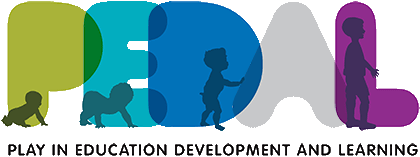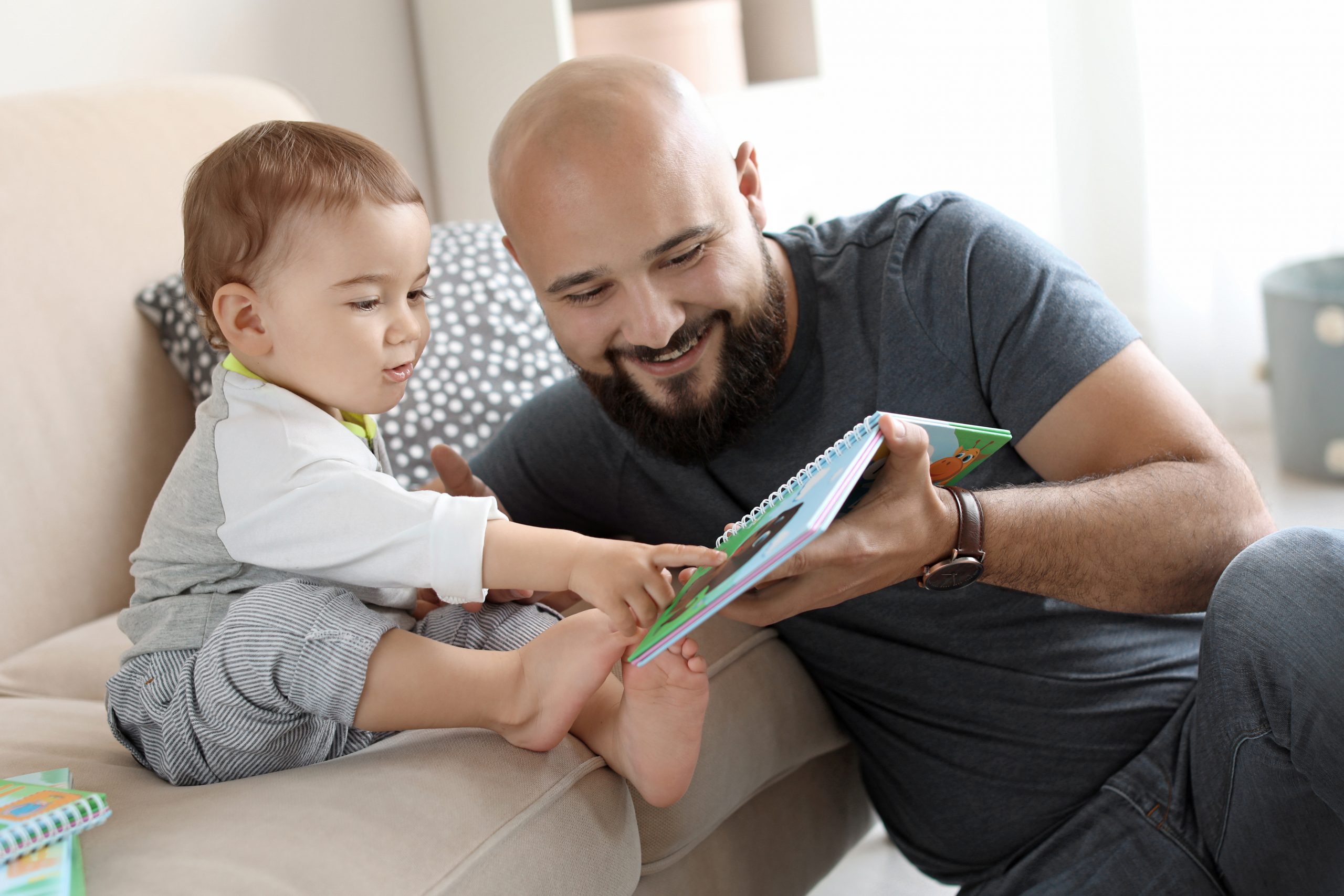A Continuum of Play-Based Learning: The Role of the Teacher in Play-Based Pedagogy and the Fear of Hijacking Play
Research Findings: Research has demonstrated the developmental and educational benefits of play. Despite these benefits, teacher-directed academic instruction is prominent in kindergarten. There is increasing acknowledgment in curricula and policies of the challenges presented by a lack of play in classrooms and the need to support academic learning using developmentally appropriate practices. Current research emphasizes […]
Research Findings: Research has demonstrated the developmental and educational benefits of play. Despite these benefits, teacher-directed academic instruction is prominent in kindergarten. There is increasing acknowledgment in curricula and policies of the challenges presented by a lack of play in classrooms and the need to support academic learning using developmentally appropriate practices. Current research emphasizes a narrow definition of play-based learning as a child-directed practice, resulting in teacher uncertainty about the implementation of this pedagogical approach. Fifteen kindergarten classrooms were examined using qualitative methodology, including observations and teacher interviews. Two different teacher profiles emerged: The 1st profile saw play and learning as separate constructs and reported challenges meeting academic demands using play-based learning. Their students primarily engaged in free play. The 2nd profile believed that play could support academic learning and that teachers fill an important role in play. Their students engaged in 5 different types of play, situated along a continuum from child directed to more teacher directed. Practice or Policy: The continuum of play-based learning provides a broader and more concrete definition of play-based learning to help teachers implement this pedagogical approach and to enhance the study of play-based learning in early years research.
Physical Play and Children’s Digital Games
Play engages humans cognitively, emotionally, and physically at all ages. Using a historical framework, and focusing on play as represented by material artifacts such as toys and games, this book explores play as a form of somatic engagement that reflects cultural attitudes about development and learning as these have evolved over time in western culture. […]
Play engages humans cognitively, emotionally, and physically at all ages. Using a historical framework, and focusing on play as represented by material artifacts such as toys and games, this book explores play as a form of somatic engagement that reflects cultural attitudes about development and learning as these have evolved over time in western culture. Theorists in the twentieth century such as Klein and Winnicott, Huizinga and Callois, Piaget, Bruner and Vygotsy brought different perspectives to our understanding of play`s role in our society. In particular, Vygotsky`s theories about process provide insight into how children attend to learning and assimilate new information. The increasing use of digital media as both an entertainment and learning environment at ever-younger ages, is generating new discussions about the nature and value of play in children`s development, in particular, physical, or somatic play. The emphasis on games intended for children necessitates a discussion of the cognitive, behavioral, and neuroscience that supports play activities and physical engagement as a crucial aspect of development. The book then looks at the trajectory of digital games in contemporary culture and explores whether these artifacts (whether intended for learning or entertainment) have extended or are curtailing boundaries of somatic engagement. Finally, the book discusses alternative play and game design and, speculates on the future of new media play artifacts.
Cultures of Creativity
Cultures develop when people find ways to play, make, and share. This report describes how human cultures can be characterised by their similarities rather than their differences, and emphasises the importance of recognising playfulness and creativity to develop societies prepared to accommodate the rapid changes associated with technology and globalisation.
Cultures develop when people find ways to play, make, and share. This report describes how human cultures can be characterised by their similarities rather than their differences, and emphasises the importance of recognising playfulness and creativity to develop societies prepared to accommodate the rapid changes associated with technology and globalisation.
Developmental psychology and early childhood education: a guide for students and practitioners
Test One to add Keyword Tags
The Oxford Handbook of the Development of Play
The role of play in human development has long been the subject of controversy. Despite being championed by many of the foremost scholars of the twentieth century, play has been dogged by underrepresentation and marginalization in literature across the scientific disciplines. The Oxford Handbook of the Development of Play attempts to examine the development of […]
The role of play in human development has long been the subject of controversy. Despite being championed by many of the foremost scholars of the twentieth century, play has been dogged by underrepresentation and marginalization in literature across the scientific disciplines. The Oxford Handbook of the Development of Play attempts to examine the development of children’s play through a rigorous and multidisciplinary approach. This book aims to reset the landscape of developmental science and makes a compelling case for the benefits of play.
Assessment of Pretend Play in Prader-Willi Syndrome: A Direct Comparison to Autism Spectrum Disorder
Children with Prader-Willi syndrome (PWS) are at risk for autism spectrum disorder (ASD), including pervasive social deficits. While play impairments in ASD are well documented, play abilities in PWS have not been evaluated. Fourteen children with PWS and ten children with ASD were administered the Autism Diagnostic Observation Schedule (ADOS) (Lord et al. in Autism […]
Children with Prader-Willi syndrome (PWS) are at risk for autism spectrum disorder (ASD), including pervasive social deficits. While play impairments in ASD are well documented, play abilities in PWS have not been evaluated. Fourteen children with PWS and ten children with ASD were administered the Autism Diagnostic Observation Schedule (ADOS) (Lord et al. in Autism Diagnostic Observation Schedule manual. Western Psychological Services, Los Angeles, 2006) as part of a larger project. A modified Affect in Play Scale (APS; Russ in Play in child development and psychotherapy: toward empirically supported practice. Lawrence Erlbaum Associates Publishers, Mahwah, 2004; Pretend play in childhood: foundation of adult creativity. APA Books, Washington, 2014) was used to score ADOS play activities. Results indicate both groups scored below normative data on measures of imagination, organization, and affective expression during individual play. In addition, the inclusion of a play partner in both groups increased all scaled scores on the APS. These findings suggest children with PWS show impaired pretend play abilities similar to ASD. Further research is warranted and should focus on constructing and validating programs aimed at improving symbolic and functional play abilities within these populations.
The Relationship between Preschoolers’ Attitudes and Play Behaviors toward Classmates with Disabilities
This study was conducted to examine the relationship between 32 typically developing preschoolers’ attitudes and play behaviors toward their classmates with disabilities or developmental delays. Children’s attitudes toward peers with disabilities were assessed using three methods: child interviews, sociometric peer ratings, and a social acceptance scale. Children’s play behaviors (e.g., solitary, onlooker, parallel play, associative/cooperative […]
This study was conducted to examine the relationship between 32 typically developing preschoolers’ attitudes and play behaviors toward their classmates with disabilities or developmental delays. Children’s attitudes toward peers with disabilities were assessed using three methods: child interviews, sociometric peer ratings, and a social acceptance scale. Children’s play behaviors (e.g., solitary, onlooker, parallel play, associative/cooperative play) and teachers’ involvement in children’s play were observed during free play over a 10-week period. Results revealed that children’s identification of a classmate with an Individualized Education Program (IEP) as having a disability was negatively related to their associative/cooperative play with the classmate. Typically developing children’s sociometric ratings of classmates with disabilities were positively related to their associative/cooperative play with classmates with disabilities. In addition, children’s sociometric ratings were a stronger indicator of whether a typically developing child would play with a classmate with a disability than was identification of a classmate as having a disability. Suggestions for future research and implications for practice are discussed.
Parents Produce Explicit Cues That Help Toddlers Distinguish Joking and Pretending
While separate pieces of research found parents offer toddlers cues to express that they are (1) joking and (2) pretending, and that toddlers and preschoolers understand intentions to (1) joke and (2) pretend, it is not yet clear whether parents and toddlers consider joking and pretending to be distinct concepts. This is important as distinguishing […]
While separate pieces of research found parents offer toddlers cues to express that they are (1) joking and (2) pretending, and that toddlers and preschoolers understand intentions to (1) joke and (2) pretend, it is not yet clear whether parents and toddlers consider joking and pretending to be distinct concepts. This is important as distinguishing these two forms of non-literal acts could open a gateway to understanding the complexities of the non-literal world, as well as the complexities of intentions in general. Two studies found parents offer explicit cues to help 16- to 24-month-olds distinguish pretending and joking. Across an action play study (n = 25) and a verbal play study (n = 40) parents showed more disbelief and less belief through their actions and language when joking versus pretending. Similarly, toddlers showed less belief through their actions, and older toddlers showed less belief through their language. Toddlers’ disbelief could be accounted for by their response to parents’ language and actions. Thus, these studies reveal a mechanism by which toddlers learn to distinguish joking and pretending. Parents offer explicit cues to distinguish these intentions, and toddlers use these cues to guide their own behaviors, which in turn allows toddlers to distinguish these intentional contexts.
What Can Chinese and German Children Tell Us about Their Learning and Play in Kindergarten?
This study investigated Hong Kong and German children’s perceptions of play and learning and their relationships. Forty-eight children (24 German and 24 Chinese) playing and learning in the classroom were observed and videotaped for five consecutive days. They were interviewed 3 times about their kindergarten experiences by using free- and cue-recall questions. It is found […]
This study investigated Hong Kong and German children’s perceptions of play and learning and their relationships. Forty-eight children (24 German and 24 Chinese) playing and learning in the classroom were observed and videotaped for five consecutive days. They were interviewed 3 times about their kindergarten experiences by using free- and cue-recall questions. It is found that the Hong Kong children remembered more academic learning activities, whereas the German children remembered more play events. Most of the Hong Kong children recalled academic learning content, whereas the German children associated learning with play. The findings showed that children’s understandings of the relationship between play and learning varied with their classroom contexts. These results suggest that children’s perspectives on play and learning should be taken into account by advocating a play-based pedagogy approach or integrating more learning elements into a play-oriented curriculum. The implications for policy and pedagogy are discussed.


